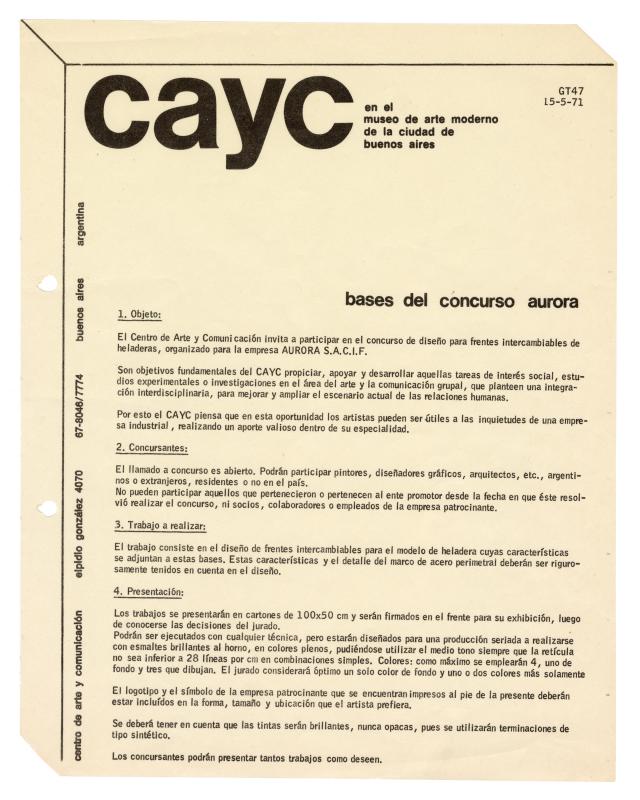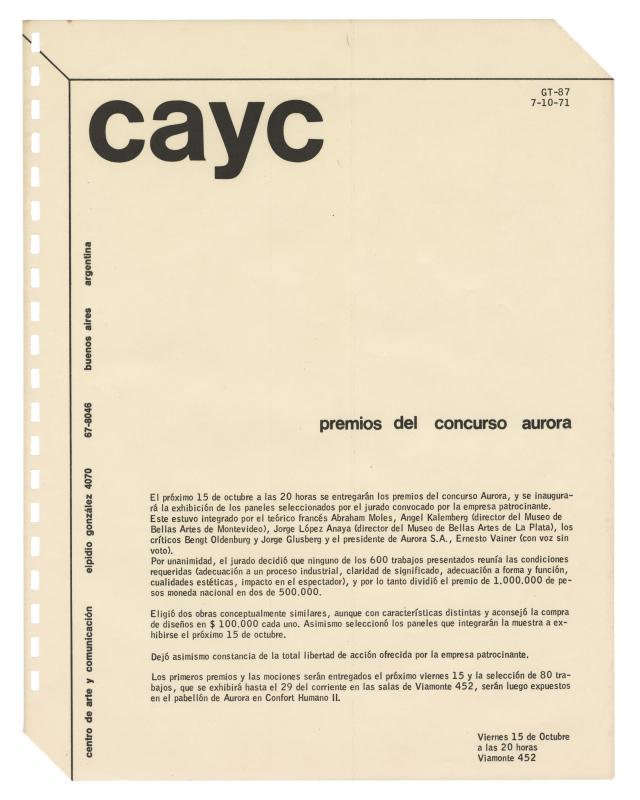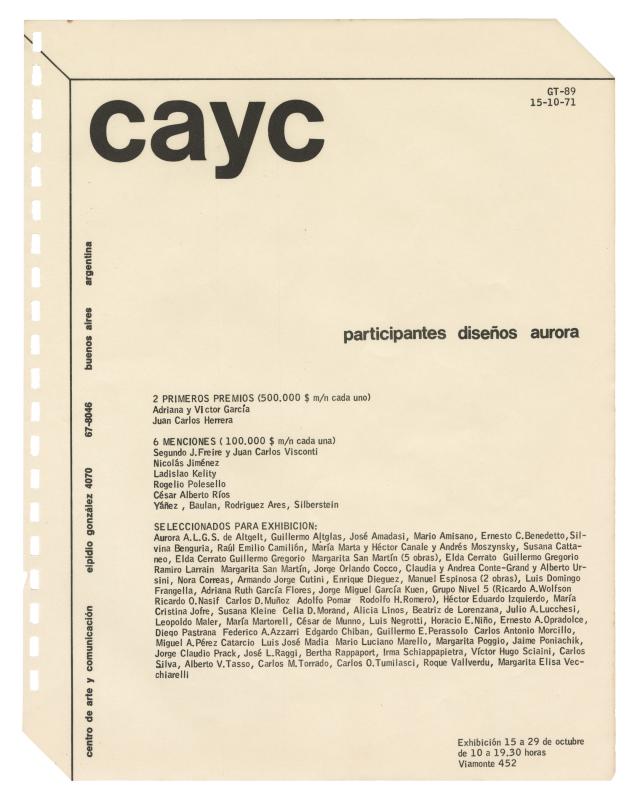Ever since it was founded, the CAYC (Centro de Arte y Comunicación), helmed by the cultural promoter, artist, and businessman Jorge Glusberg, was intended as an interdisciplinary space where an experimental art movement could flourish. The establishment of collaborative networks connecting local and international artists and critics played an important role in this process. The exhibitions shone a light on these exchanges, in which overviews of trends or individual artists provided an introduction to the innovations of international contemporary art and made Argentine and Latin American artists better known on the global scene.
Architecture and design were basic components of the CAYC’s interdisciplinary approach. In its early years, the center became affiliated with the Fundación de Investigación Interdisciplinaria (Foundation for Interdisciplinary Research), an organization that included a group of dissident professors from the Facultad de Arquitectura y Ciencias Exactas at the Universidad de Buenos Aires following the forced occupation of universities, the violation of social and educational norms that took place after the coup d’état orchestrated by General Onganía in 1966. That earlier affiliation left an indelible mark on various aspects of the CAYC’s operations, such as its approach to many of its initiatives as “projects;” the use of heliographic copies in its exhibitions; the center’s collaboration with the industrial sector in exhibitions and contests; and the presence of several artist-architects among the founders of the Grupo de los Trece: Clorindo Testa, Jacques Bedel, and Luis Fernando Benedit.
As noted in the newsletter, initiatives such as the Aurora competition were examples of exhibitions and exchanges that contributed to the development of disciplines that were thought to have been ignored or overlooked in Argentina during the 1970s. Even in the field of consumer goods, progress was not judged in terms of a product’s success in the marketplace, but in the inherent qualities of the design itself: its formal resolution and the use of new materials. Hence the comparison to contemporary art and the use of the term “interior architecture” instead of what might be considered lesser terms, like “interior design” or “interior decoration.”
Exhibitions and competitions of this type frequently enjoyed the support of companies engaged in the production and marketing of industrial products. A case in point was the involvement of Noren Plast S.A. (a supplier of plastic materials) in the exhibition Escultura, follaje y ruidos in 1970 (GT-08, GT-17; doc. nos pending) or the competition organized by the Aurora home appliance company in 1971 (GT-41; doc. no. 1478063, GT-42; doc. no. 1478064, GT-47; doc. no. 1478075) ). Glusberg had connections to the industrial sector through his own company, Modulor S.A., which sold lighting fixtures.
The conditions mentioned in the CAYC-Aurora invitation explained that this competition was open to “any interested artist, in Argentina and abroad, and designers and researchers in any field;” they are the “link between art and technology,” addressing current issues on behalf of the community as a whole. The inclusion of the French theorist Abraham Moles (1920–1992) on the jury guaranteed the contemporaneous nature of the event. Subsequent newsletters announced information about the jury (GT-87; doc. no. 1477975) and included the final list of prizewinners and selected artists (GT-89; doc. no. 1477980).



